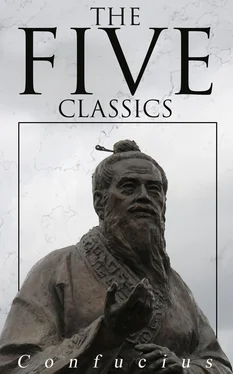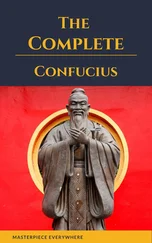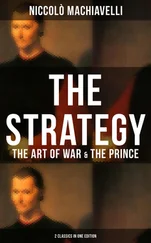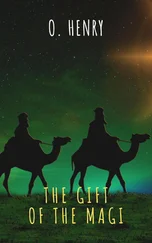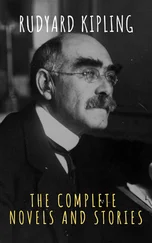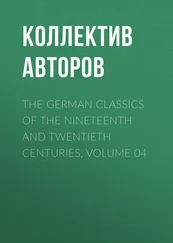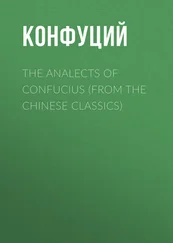The 'Daily Lecture' at the conclusion of its paraphrase of the Thwan refers to the history of the ancient Shun, and the wonderful achievements of his virtue. The authors give no instance of the affecting, of 'pigs and fishes' by sincerity, and say that these names are symbolical of men, the rudest and most unsusceptible of being acted on. The Text says that the man thus gifted with sincerity will succeed in the most difficult enterprises. Remarkable is the concluding sentence that he must be firm and correct. Here, as elsewhere throughout the Yî, there comes out the practical character which has distinguished the Chinese people and their best teaching all along the line of history.
The translation of paragraph 1 is according to the view approved by the Khang-hsî editors. The ordinary view makes the other to whom the subject of line 1 looks or might look to be the subject of 4; but they contend that, excepting in the case of 3 and 6, the force of correlation should be discarded from the study of this p. 202 hexagram; for the virtue of sincerity is all centred in itself, thence derived and thereby powerful.
For paragraph 2, see Appendix III, Section i, 42. It is in rhyme, and I have there rendered it in rhyme. The 'young ones of the crane' are represented by line 1. In the third and fourth sentences we have the symbolism of two men brought together by their sympathy in virtue. The subject of the paragraph is the effect of sincerity.
The 'mate' of line 3 is 6. The principle of correlation comes in. Sincerity, not left to itself, is influenced from without, and hence come the changes and uncertainty in the state and moods of the subject of the line.
Line 4 is weak, and in its correct place. The subject of it has discarded the correlate in 1, and hastens on to the confidence of the ruler in 5, being symbolised as the moon nearly full. The other symbol of the horse whose fellow has disappeared has reference to the discarding of the subject of 1. Anciently chariots and carriages were drawn by four horses, two outsides and two insides. Lines 1 and 4 were a pair of these; but 1 disappears here from the team, and 4 goes on and joins 5.
Line 5 is strong and central, in the ruler's place. Its subject must be the sage on the throne, whose sincerity will go forth and bind all in union with himself.
Line 6 should be divided, but is undivided; and coming after 5, what can the subject of it do? His efforts will be ineffectual, and injurious to himself. He is symbolised by a cock--literally, 'the plumaged voice.' But a cock is not fitted to fly high, and in attempting to do so will only suffer hurt.
Hexagram LXII. 62Hsiâo Kwo
Table of Contents

Hsiâo Kwo indicates that (in the circumstances which it implies) there will be progress and attainment. But it will be advantageous to be firm and correct. (What the name denotes) may be done in small affairs, but not in great affairs. (It is like) the notes that come down from a bird on the wing;--to descend is better than to ascend. There will (in this way) be great good fortune.
1. The first line, divided, suggests (the idea of) a bird flying, (and ascending) till the issue is evil.
2. The second line, divided, shows its subject passing by his grandfather, and meeting with his grandmother; not attempting anything against his ruler, but meeting him as his minister. There will be no error.
3. The third line, undivided, shows its subject taking no extraordinary precautions against danger; and some in consequence finding opportunity to assail and injure him. There will be evil.
4. The fourth line, undivided, shows its subject falling into no error, but meeting (the exigency of his situation), without exceeding (in his natural. course). If he go forward, there will be peril, and he must be cautious. There is no occasion to be using firmness perpetually.
5. The fifth line, divided, (suggests the idea) of dense clouds, but no rain, coming from our borders in the west. It also (shows) the prince shooting his arrow, and taking the bird in a cave.
6. The sixth line, divided, shows. its subject not meeting (the exigency of his situation), and exceeding (his proper course). (It suggests the idea of) a bird flying far aloft. There will be evil. The case is what is called one of calamity and self-produced injury.
62.The name Hsiâo Kwo is explained both by reference to the lines of the hexagram, and to the meaning of the characters. The explanation from the lines appears immediately on comparing them with those of Tâ Kwo, the 28th hexagram. There the first and sixth lines are divided, and between are four undivided lines; here the third and fourth lines are undivided, and outside each of them are two divided lines. The undivided or yang lines are great, the divided or yin lines are called small. In Hsiâo Kwo the divided or small lines predominate. But this peculiar structure of the figure could be of no interest to the student, if it were not for the meaning of the name, which is 'small excesses' or 'exceeding in what is small.' The author, accepted by us as king Wăn, p. 204 had in his mind our distinction of essentials and non-essentials. Is it ever good to deviate from what is recognised as the established course of procedure? The reply is--never in the matter of right but in what is conventional and ceremonial--in what is nonessential--the deviation may be made, and will be productive of good. The form may be given up, but not the substance. But the thing must be done very carefully,--humbly and reverently, and in small matters.
The symbolism of the bird is rather obscure. The whole of it is intended to teach humility. It is better for the bird to descend, keeping near to where it can perch and rest, than to hold on ascending into the homeless regions of the air.
Line 1 is weak, in an odd place, and possessed by the 'idea of exceeding,' which belongs to the hexagram. Its correlate is the strong 4, belonging to the trigram K ăn, the attribute of which is movement. There is nothing to repress the tendency of i; rather it is stimulated; and hence the symbolism.
Line 2 is weak, but in its proper place, and in the centre. Its correlate is 5, which is also a weak line. The lines 3 and 4 between them are both strong; and are supposed to represent the father and grandfather of the subject of 2; but he or she goes past them, and meets with the grandmother in 5. Again, 5 is the ruler's seat. The subject of 2 moves on to him, but not as an enemy; but humbly and loyally, as his minister according to the attributes of a weak line in the central place. It must be allowed that this view of the symbolism and its interpretation is obscure and strained.
The subject of line 3 is too confident in his own strength, and too defiant of the weak and small enemies that seek his hurt. p. 205 Line 4 is also strong, but the exercise of his strength by its subject is tempered by the position in an even place. He is warned, however, to continue quiet and restrain himself.
Line 5, though in the ruler's seat, is weak, and incapable of doing anything great. Its subject is called king or duke because of the ruler's seat; and the one whom in the concluding sentence he is said to capture is supposed to be the subject of 2.
The first part of the symbolism is the same as that of the Thwan under hexagram 9, q.v. I said there that it probably gave a testimony of the merit of the house of K âu, as deserving the throne rather than the kings of Shang. That was because the Thwan contained the sentiments of Wăn, while he was yet only lord of K âu. But the symbolism here was the work of the duke of K âu, after his brother king Wû had obtained the throne. How did the symbolism then occur to him? May we not conclude that at least the hsiang of this hexagram was written during the troubled period of his regency, after the accession of Wû's son, king Kh ăng?
Читать дальше
